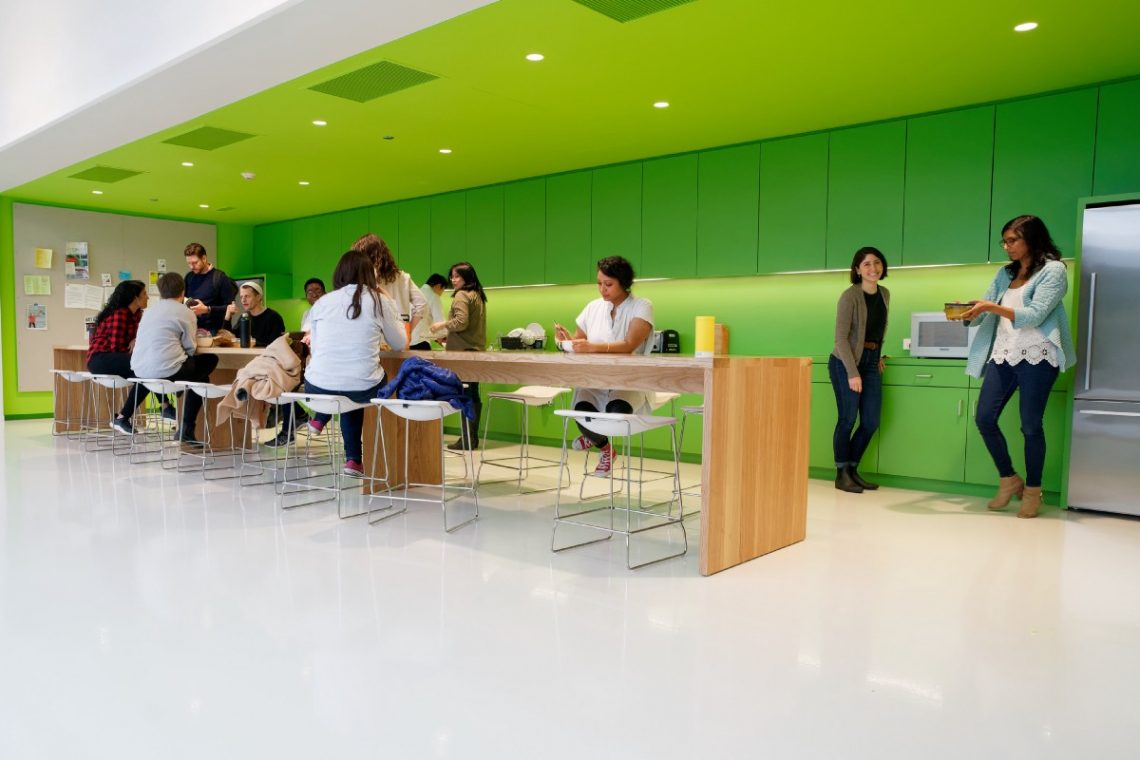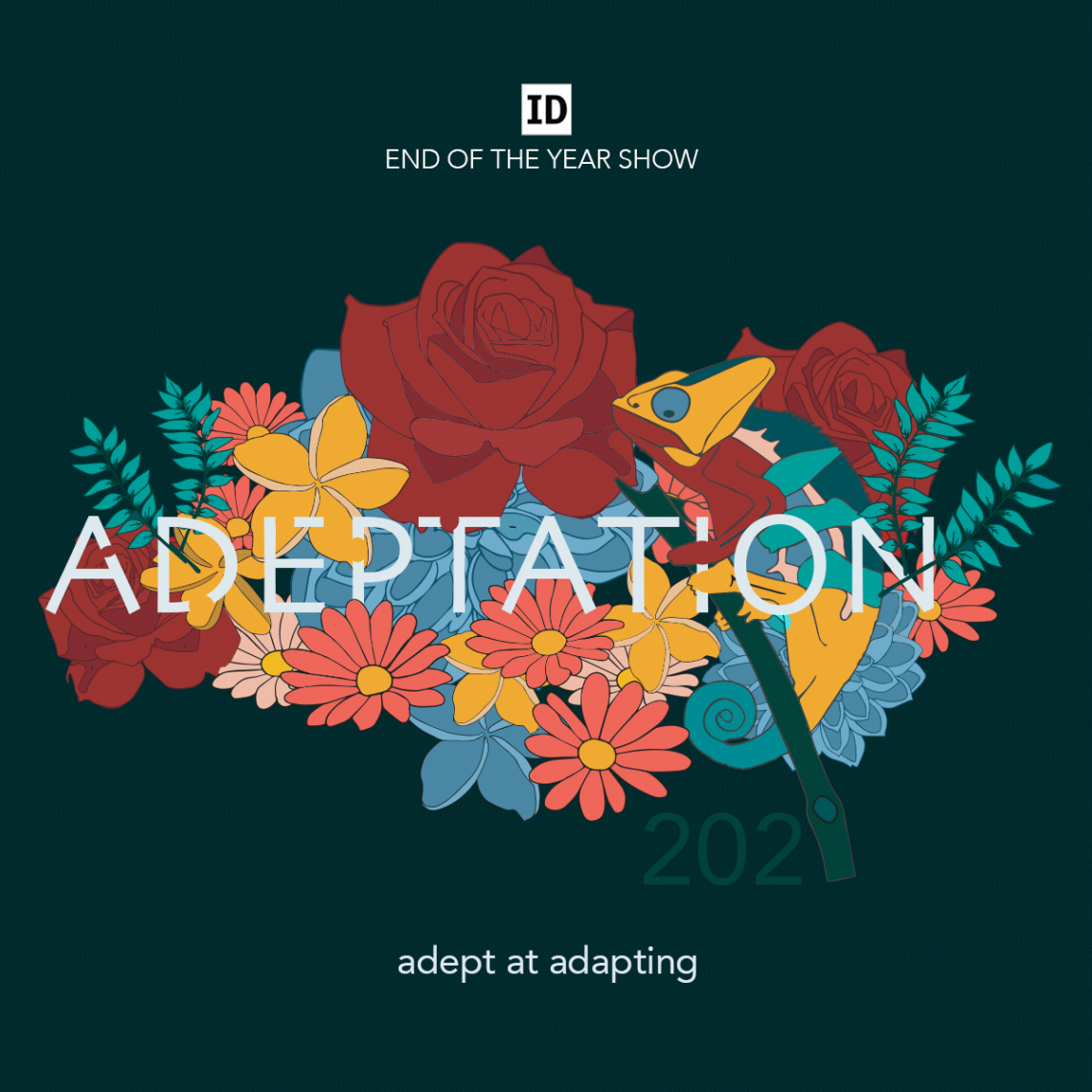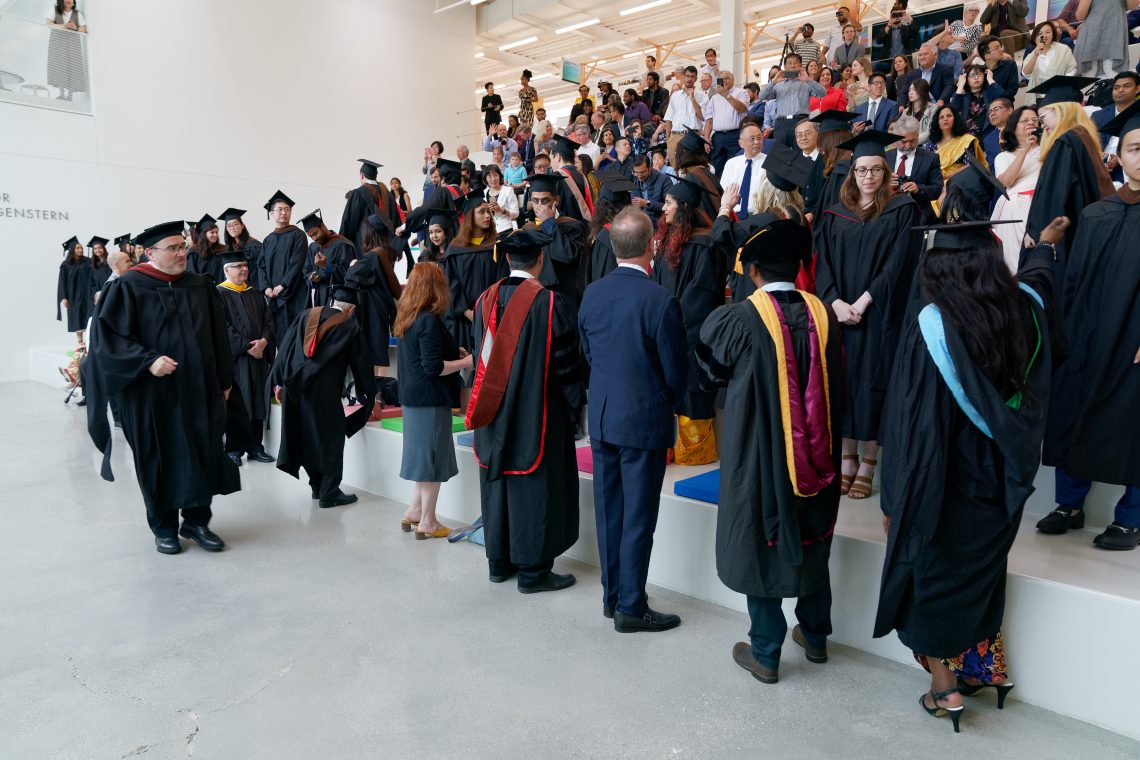We Have Become Dash-Designers
By Justin Bartkus (MDes + MBA 2021)
May 17, 2021

Justin Bartkus (MDes + MBA 2021) spoke at the May 15, 2021 IIT Institute of Design Commencement Ceremony. Following is a transcript of his speech.
It would’ve been nice to get the full ID vibe one last time. While I’m recording this speech from Kaplan, you and I both know it’s not the same. The pandemic has deprived us of the chance to fully be together, even for these last culminating moments.
I wanted to set myself down for lunch in the green kitchen. It’s where I would learn the obscure details about other people’s hobbies: Filipino martial arts, juicing diets, documentary film festivals, to name a few.
I wanted to amble by the pitch, plop my rear upon one of those Post-it cushions, and absorb a panel discussion about the circular economy, or the Bauhaus, or Black design.
I wanted to imbibe that bizarre mixture of stress, positivity, and weirdness that prevails in the studio during final projects week.
While the pandemic denied me this one last walk down memory lane, I still would like to start with a story. It is a little anecdote that illustrates what ID has fundamentally done for me, and it will open up some reflections about how we might carry the best of ID into our careers.
A salutary embarrassment
Almost three years and what feels like a lifetime ago, it was week four of the semester, and I was young and green at ID. It was a Product Design Friday at the old downtown campus. In a few hours, Marty, our professor, would take us out for beers at Dugan’s on South Halsted. However, at that moment, I couldn’t think about happy hour.
I was emotionally preoccupied. Mortified, really.
On a table at the front of the room lay 21 foamcore models of a desktop printer — one for each student. We had spent the whole week in the shop surrounded by the paraphernalia of foamcore modeling: Exacto knives, glue guns, and an array of power saws. Some of us had stayed in the studio till midnight the night before, bending, gluing, and joining planks to construct our replicas. It was a lot of hard work to execute what seemed like a very arbitrary assignment.
Marty was picking the foam printers up, one by one, holding them to the light, inspecting and scrutinizing them. “They look good,” he was saying.
Then he came to mine. “Oh,” he said.
I shifted in my seat. Something was wrong.
At that moment, I realized it: I had placed the wraparound piece — the one that formed the main body of the printer — backwards. The join, which was supposed to be hidden at the back of the printer, was in the front, garishly staring back at me. It was a major error, made in a split second of fatigue and distraction. A pit opened up in my stomach. I felt my heart rate speed up. The blood drained from my face. I felt like I was falling into a black hole.
This “design school” thing wasn’t going well. No way I was getting beers at Dugan’s that night.
The whole thing may seem trivial now, but you have to understand: this was Foundation. The incident had triggered a chain of thoughts that was typical during that year:
And here I was piling up sleep debt and hot glue burns just to make a printer out of foam — and sucking at it. But then, interrupting this spiral of self-criticism, Marty gave a little chuckle as he examined my backwards printer. With his bemused half-smile, he said: “Every year, there’s always somebody.”
Becoming a dash-designer: The ID system was being applied to me
“There’s always somebody.”
What Marty was communicating to me was that everything was okay; that I was not alone in my mistake; that failure didn’t signal a lapse in Marty’s care for me as a student and a person; and that trying and failing was better than not trying in the first place.
Three years later, it’s hilariously clear that my entire biophysical and emotional response was totally out of proportion. Today, I would’ve laughed it off and gotten beers at Dugan’s. But that’s also kind of the point.
At that mundane moment on a Friday afternoon in October 2018, the ID system was being applied to me. My counterproductive emotional response was not simply indicative of a character flaw; it was the product of my previous professional culture and its failure to prepare me for ambiguity and creative challenge.
ID does not sell cheap and easy creativity. Its superpower is to hybridize and hyphenate its people. We come as engineers, architects, business folks, (or, in my case, a theologian) and we leave as engineer-designers, architect-designers, business-designers, theologian-designers. ID doesn’t erase our unique set of skills, experiences, and quirks; rather, it embraces them, equips them, and amplifies them. It adds the “dash-designer” to our personal identity.
I am convinced that this phrase “dash-designer” signifies something intangible, almost spiritual. It’s what proves that we are a mindsets school, not a methods school. I would like to highlight three qualities that get to the essence of this “dash-designer” mindset.
1. Being water.
If design is the discipline of giving proper form to an artifact, then we designers have to be formless, like water. As Bruce Lee says: “Do not be assertive, but adjust to the object, and you shall find a way around or through it… Be water my friend.”
It’s way easier to perform our self-brands than to put in the hard work of continuously building them. As designer Annika Izora says: “If your actions are not ongoing, they are a performance, not a practice.” Whatever we may post on Linkedin or claim of ourselves through our portfolios, we nonetheless have to take pride in being water: learning, listening, building self-awareness and competence, until we find it’s our time to flow in and through a problem.
But water doesn’t just flow; it also crashes. Embedded injustices require us to crash. We crash when we speak up; when we vote with our labor; when we center not only humans, but the highest humanizing values: solidarity, sustainability, and equity, as Weslynne Ashton, Laura Forlano, and Chris Rudd have taught us.
2. Being vulnerable.
It requires a kind of psychological vulnerability to exist inside a problem, to inhabit that space between the “is,” where research is done, and the “will be”, where implementation happens. It’s not easy to stumble around this intermediate should be. It feels uncomfortable and exposed.
But it’s also where we have to go, again and again, whether pausing to sketch, re-writing the problem statement, moving the sticky notes around, having a glass of wine. Rather than giving into the anxiety to simply have an answer and be done with it, let’s make ourselves vulnerable and allow the problem to drive us a little insane. Whatever comes out the other side will be better for it.
3. Being humble.
When I was applying to ID, I remember observing the fanfare around “design thinking.” Designers seemed to have the stuff of genius: smooth, confident, and “disruptive.” It certainly was an attractive narrative. But of course, we know this narrative is self-serving. The more complex the problems, the more cooperative and inclusive the solutions need to be. What if we saw ourselves more as contributors rather than solvers? What if our hard-earned skills and design powers, rather than returning acclaim and attention to ourselves, consistently and intentionally enriched the ecosystems and people with whom we worked?
Being water. Being vulnerable to a problem. Being humble. I believe these qualities are indispensable as we launch our careers, becoming design leaders in an era defined by its crises. We are emerging into the midst of these crises and we will play a role, however small, in determining their future.
The fire came from you, colleagues
When I say that “ID” taught me these intangible qualities, I don’t only refer to faculty or courses, though they were wonderful. I refer to this entire community of committed, talented, and inspiring human beings. The guidance may have come from the faculty, but the fire came from my colleagues.
During our time here, students rebuilt the entire student government; we’ve stubbornly maintained our culture amidst 14 months of distributed work. Think of the Humans of ID Slack channel or the End of Year Show (which we have staged twice now); we have built anti-racist pop-ups and student advising toolkits; international food fests and Chicago’s hottest Japanese breakfast startup. Our student community simmers with hard work, creative optimism, and dedication to purpose, both individual and collective.
And so my fellow “dash-designers,” congratulations on persisting to the end of this journey. Congratulations on the moments when Marty’s comment — “there’s always somebody” — applied to you, and you didn’t give up. Congratulations especially on persevering through those moments you didn’t feel competent; through moments where you felt unseen, unheard, or unvalidated; through moments of trauma or personal struggle — which have touched many of us this year, especially our Black colleagues and community members.
As we depart ID for the next chapter in our journeys, I wish you the clarity of a Tomoko diagram, the joy of a Sari facilitation, and the care and fellowship of a night out at Dugan’s.


